At Made Smarter we don’t just help fund technology adoption; we also give you the skills and leadership training required to digitally transform your business.
One of our programmes, run in association with Manchester Metropolitan University is Leading Digital Transformation.
Aimed at North West SME business owners, senior leaders, and decision-makers this three-month blended, flexible, programme gives you the knowledge and skills to plan and lead digital transformation strategy within a manufacturing business.
But what’s it like to be a delegate on the programme? Find out as we drop in on a cohort during a visit to PrintCity to learn more about 3D printing.
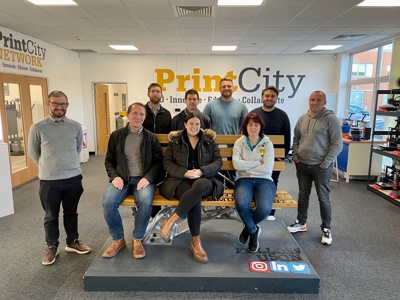
Meet the Leading Digital Transformation cohort
It’s great to meet our current cohort who hail from a range of sectors. There is a mix of job titles in the room too including Managing Director, Accounts Manager, and Strategic Development Director.
These North West manufacturers make everything from car wash chemicals, playground equipment, and switch gears to soft drinks and all-terrain outdoor wheelchairs. The majority have heard of 3D printing before but are yet to invest in the technology.
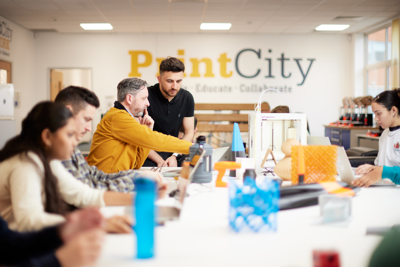
What is PrintCity?
PrintCity is a 3D additive and digital manufacturing facility based at the Turing House Building next to the Manchester Met campus in Hulme.
It is run by Professor Carl Diver, Director of PrintCity, and Project Manager Alan Dempsey who are both our guides for the day.
Founded almost six years ago, the 1.7m facility is home to manufacturing experts, designers, engineers, and students.
PrintCity is used for teaching, research and school outreach as well as offering a commercial service to businesses of all size.
We get a quick history of the facility from Alan who tells us that 3D printing is now being used on 16 different undergraduate courses from Fine Art to Mechanical Engineering.
He talks about how PrintCity is helping to upskill students and businesses, in computer-aided design (CAD). They also run a Masters course which was co-developed with industry leaders; graduates have gone on to work for Bentley, Aston Martin and Made Smarter.
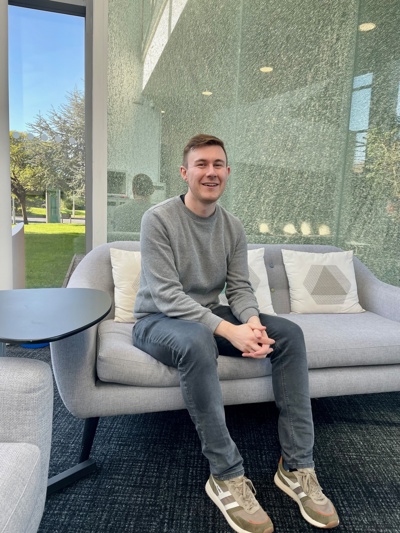
How does PrintCity help businesses?
PrintCity has worked with 150+ businesses over five years with great outcomes, including investment from Dragons’ Den.
The biggest benefit of exploring 3D printing here, before investing, is that the specialist team are on hand to help you de-mystify and de-risk the technology.
Mark Chester, Product Development Specialist said: “Many businesses have a pre-conception that 3D printing is only good for prototypes or hobbyists, which isn’t the case.
“Where we have seen good uptake is for businesses who have issues with their supply chain – for example if they have batches coming from the Far East because of Brexit, or if there’s disruption with the Suez Canal.
“The other good use is to personalise or create more bespoke products which is what we see a lot of with SMEs.”
In 2022 PrintCity won the 3D Printing Industry Award Academic / Research Team of the Year, outperforming elite competitors like Harvard University and Zurich Institute of Technology.
“We are here to help businesses understand the technology and work on the design-side” explains Alan.
“It also gives businesses the chance to explore which is the right material and the right fit for their products.”
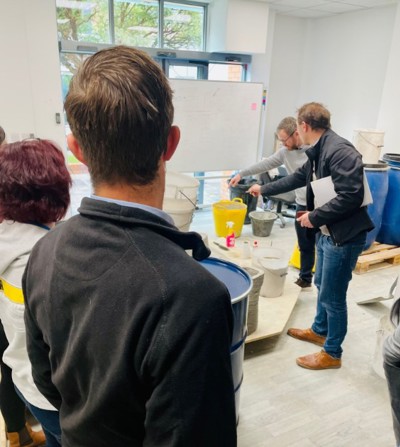
How does 3D printing work?
To get a better grasp of this we are taken on a two-part tour of the facility to see the technology in action.
There are a range of different 3D print technologies on-site from a number of suppliers and software providers including: Autodesk, MarkForged, Formlabs, HP, Stratasys, Ultimaker and more.
The range of facilities means PrintCity is equipped to help businesses move from concept to finished product using a variety of coloured filaments, resins, fibre-reinforced nylon, metal alloys and even concrete.
We get to see a variety of different 3D printers in use, including the lower-end FDM style (which extrudes plastic through a heated nozzle) to resin printers and higher-spec Continuous Fibre Fabrication (CFF). These are more expensive but also more precise and allows the production of end-use parts.
There is also a metal 3D printer, which extrudes metal filament through a nozzle, and can work with a range of materials including stainless steel and copper.
The final room is noticeably colder and is where the 3D concrete printing is done. A current project involves grinding down material from demolished buildings to 3D print street furniture.
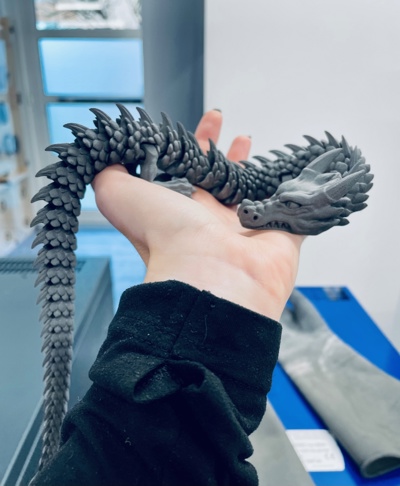
What cool stuff did you see?
Ok, there is a lot of innovation happening here and the byproduct of innovation is cool stuff.
Everywhere you look at PrintCity there is something interesting made using this technology – from a modernistic chess set to an oak and aluminium framed bench.
Our cohort got to handle 3D-printed Adidas trainers, and intricate metal animals and see fabric that had been 3D printed on for London Graduate Fashion Week – all while learning about the technology and how it could be utilised.
Speaking of the visit Janet Sergeant, Managing Director at Nutexa Frictions said: “I have found it really useful. It’s interesting to see what is possible and to start thinking about how we might implement it in the business. I would certainly encourage other businesses to come and take a look around.”
Fellow Leading Digital Transformation delegate Angela Murphy said they were already looking at how 3D printing could play a part at Majas Switchgear. The Accounts Manager added: “It has been a really fascinating session and I know our design engineer and MD are keen to visit PrintCity too. I didn’t know there was such a variety of materials you can use.”
Describing Made Smarter’s Leading Digital Transformation programme, she said: “One of the best things is being part of a peer group because you are with people who are experiencing the same challenges. We have visited each other’s sites to look at different software systems and it’s so useful being able to talk it through with other North West manufacturers.”
To learn more about the Leading Digital Transformation course here.


